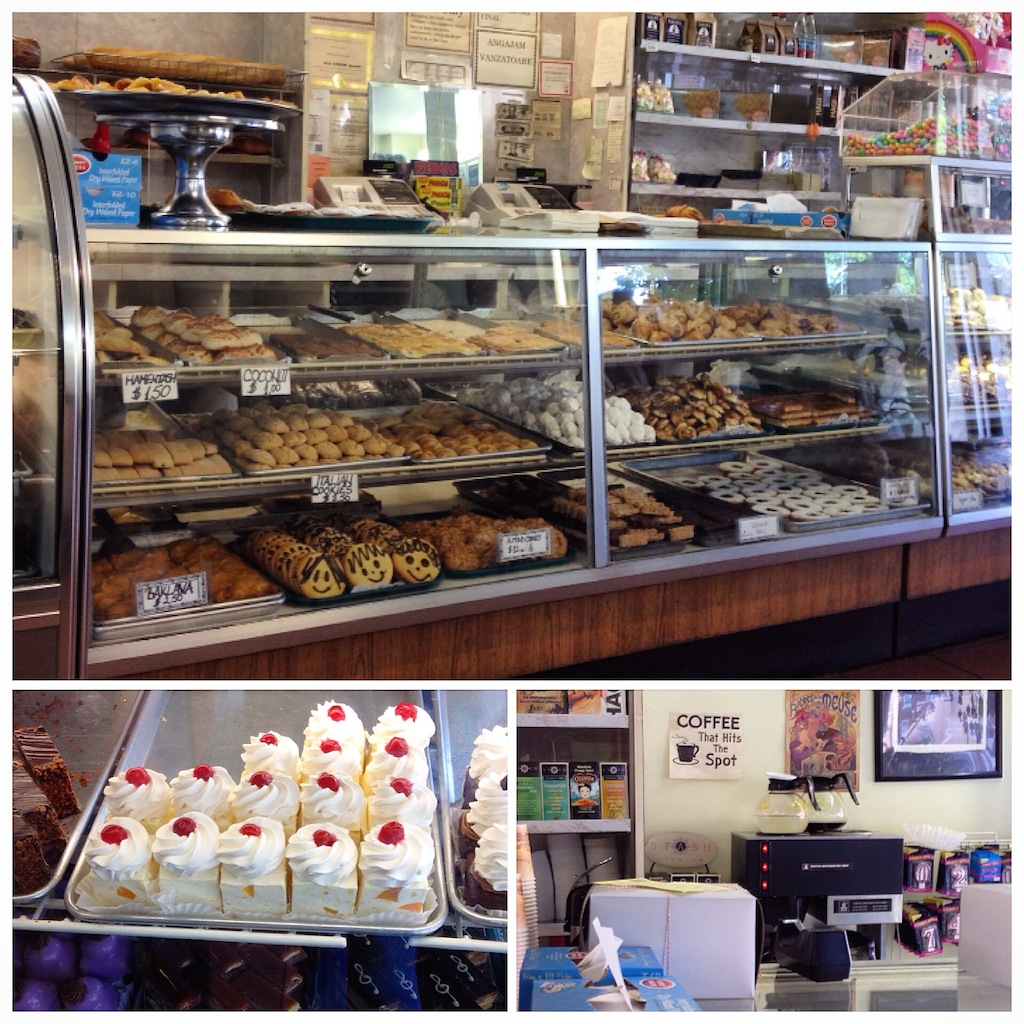Beyond pad thai, mango sticky rice and tom yam in Bangkok, there are Teochew pastries for weddings and festivals. These pastries come in different sizes and assorted fillings, a great accompaniment for breakfast and coffee breaks.
On Charoen Krung Road, on the quieter side of Chinatown, is a 100-year-old family-run Teochew bakery named Tae Loa Chin Seng. Three sisters, third generation Chinese Teochew born in Thailand, took over the business from their father. Their grandparents were from Swatow, China where the Teochew Chinese in Bangkok came from.
While wandering around in the neighborhood searching for a place for coffee, I stumbled upon this bakery. The ladies were speaking Teochew, a Chinese language I faintly remember from childhood. My paternal grandparents were second generation Teochew born in Singapore. The owner invited me in. I sampled a variety of cakes and was given a tour of the kitchen, located inside the shop.
Teochew in Bangkok
The Chinese community in Bangkok is the most integrated among the Chinese diaspora, so it came as a surprise to see a handful of traditional Teochew bakeries still in existence in Bangkok. Tae Loa Chin Seng is one of the few where you can buy authentic Teochew pastries.
Thai Chinese tend to intermarry with local Thais. They embrace Thai culture, change their names to Thai names and adopt the Thai language as their first language. Their names are particularly long.
Since the 18th century, the Teochew Chinese were the most influential in Bangkok, making up about 56% of the ethnically Chinese population. By the 1970s, Thai was spoken exclusively in their homes. You can only find a handful of the elderly, third generation Chinese speaking Chinese dialects. The most common Chinese dialects are Teochew, Hokkien, Cantonese, and Hakka.
From 1882 to 1917, 13,000 to 34,000 Chinese immigrants moved to Bangkok. They became laborers, blacksmiths and rickshaw pullers. A majority worked in Thai rice plantations. By the mid-twentieth century, most of these immigrants and their children had taken important roles in the business sectors of Bangkok. With progress came the abandonment of traditions including the art of making traditional Chinese pastries.
The various types of traditional Teochew pastries in the bakery
The Teochew pastries at Tae Loa Chin Seng Bakery are handmade. The process is labor-intensive. Centuries-old ovens, bake pans and stamps are still in use today.
According to the owners, the shop is the busiest during Lunar New Year and Chinese festivals. A large number of their customers that follow traditional Teochew wedding ceremonies also order large peanut and sesame cookies shaped like pigs, as seen in the photo below.
Besides the wedding “pig” cookies, the two most popular pastries are da lao bing and dou diao.
Da Lao Bing
Made of bean paste, flour, lard, and sugar. Also known as son-in-law cake, Da lao bing is handmade, without additives and preservatives. There are various types of da lao bing – black bean sesame, red beans, lotus paste and double yolks, and mung beans.
I went to the kitchen, located at the back of the store to check out the process of making the pastries.
Dou Diao (Teochew peanut candy)
Made of peanuts, sesame seeds, and sugar, eating dou diao or Teochew peanut candy is like eating crunchy peanut butter, except it is very hard.
When asked if the art of making Teochew pastries is passed down to the next generation, they shrugged their shoulders and said, “come again!”
This is a guest post.
